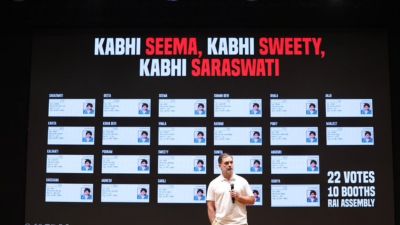How a little bit of spying helped India
Like all teams, India’s analyst was on the job working out set-piece strategy for each rival batsman.

Here’s an aspect of international cricket that not many are familiar about: the art of surveillance. Rather, it’s the science of tracking key opposition batsmen in action on camera, and working out set-piece strategy that will be employed against them in matches.
It’s now done the world over, and that’s one of key factors that worked for Team India against Australia in the semi-final here yesterday. Just one instance: after capturing and analyzing tournament footage of danger-man Mathew Hayden, highest scorer in the Twenty20 World Cup so far, India worked out an across-the-stumps line of attack and the right length against him, which saw the hard-hitter heaving and missing against Sreesanth repeatedly, building the pressure early on.
In this tournament, Team India’s man on the job is Dhananjay, who carries just as much baggage as any Indian cricketer; only it’s packed more with cables and encoders. “I am a feedback man basically, who provides resources in a mould that the coaching staff wants to use. It’s about providing intelligent information, not just information that I feel should be useful to the players or the coaches,” he says. “It forms a part of team strategy.”
According to India’s cricket manager Lalchand Rajput, “We had planned well for the Australians. Most of the time, it works out well, but sometimes the batsmen don’t fall into the trap, or our bowlers are not able to stick to plan. So it all depends on various factors. But, on the whole, we have got very close to what we had planned for each match,” he says.
But how much does planning, or watching tapes, in Twenty20 actually works? “It works for all formats of the game. Actually, most of the players know the pattern and the opposition well because they have played against each other so many times. But video tapes have higher retention level.” says Dhananjay.
“Actually, if you have all the information about your opposition then it makes those split-second decisions easier. And Twenty20 is all about quick decisions,” he says.
On this whirlwind Twenty20 format where travelling and back-to-back matches go hand in hand, do analysts from different teams get to catch up with each other? And if so, what did they discuss? “Technology of course,” says Dhananjay. “Every team uses different software, so it’s nice to get some information as to how well the others are doing.”





- 01
- 02
- 03
- 04
- 05


























